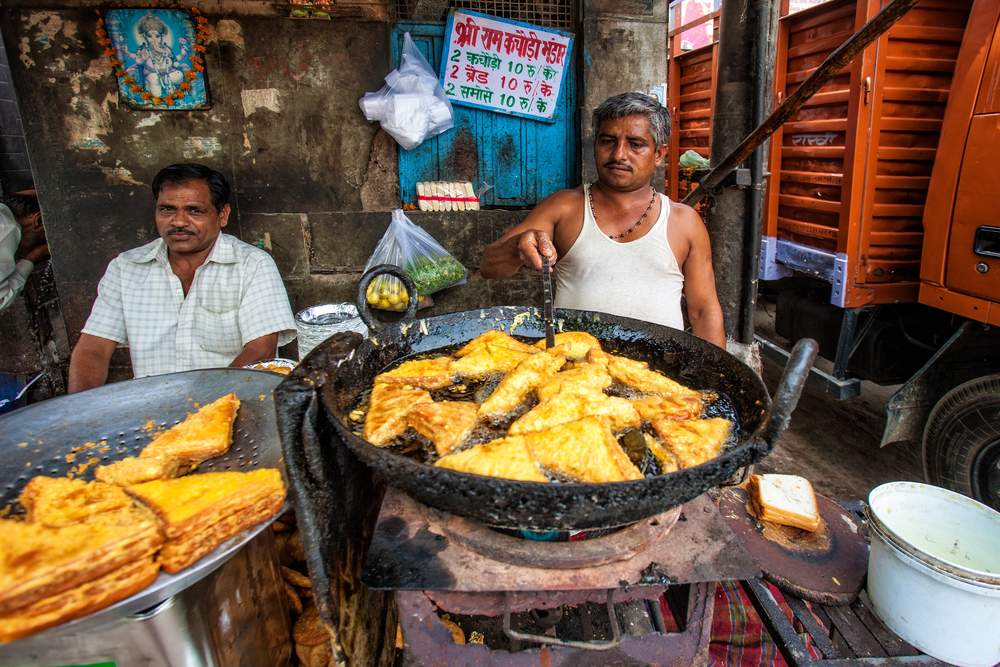It’s also one of the biggest misconceptions of why a person can’t travel. Sure, travel can be expensive. Go to Manhattan, London, Rome or any other major city throughout the developed world, and costs will be high. But for every Los Angeles and Paris, there’s also a Bangkok and Buenos Aires.
If you clicked on this article to find out that RTW travel costs X dollars per day, you won’t find it here. Everyone is going to have a different budget because everyone travels differently. Some can do it on $15/day, while some have trouble doing it on $100/day.
I’m extremely happy I didn’t stick to my very first response of, “We aren’t rich; we could never do that.” If I did, who knows where we’d be today? Whether you’re planning on hitting the road for an undetermined amount of time or just wanting to get out of town for a week, there are several ways to keep those costs down and realize that even if you’re just a normal person, you too can afford to travel the world.
You Don’t Need to be Rich

Even though I was very skeptical, I was also very intrigued. So, I used the old Google and started doing some research. I came across a few travel blogs immediately, many of which were devoted to long term, RTW travel. I read the bios of the authors – people who didn’t seem much different than I was- and a bit about their experiences. None mentioned lottery winnings or trust funds.
“But how?” I thought to myself. “How in the world (pun intended) did these people afford to quit their jobs and travel, some for a year, some for more?”
By this point I was more than intrigued. My tune of not being able to travel because we weren’t rich had changed. I still didn’t quite understand how these people did it, but I knew that they did in fact do it.
I knew I loved to travel but our international travel experience had been limited to a 3 week trip to Europe. It was expensive, despite the fact that we stayed in hostels most of the time. So, I was still confused. If we were to travel in the same manner as we did on that trip to Europe, we wouldn’t last but a month before funds ran out.
>> Discover five countries to visit for under $500
How to Figure Costs

By traveling slowly and not trying to do too much, you’ll not only prevent the dreaded travel burnout, but your money will last much, much longer.
Unfortunately there is no website around that provides costs for every single travel destination in the world (though some try). Even if there was, travel is different for everyone, so it would all be subjective anyway. The best thing to do is use a combination of different resources. Guidebooks typically have costs associated for travel within different regions. Keep in mind that most are at least a year out of date, if not older, so aim high. You never want to underestimate your costs.
Message boards are also chock full of information. BootsnAll has a RTW forum with a myriad of different threads about budgets. There are tons of travelers who peruse those boards and are more than willing to let you know how much they spent.
After that, it’s just a matter of being honest with yourself. If you know you aren’t going to stay in dorms, don’t budget for them. If you hate cooking and never do it, then don’t budget with the intention of cooking a few meals a day. If you know that you’re going to want to splurge on a nice hotel once a week, plan for that.
There’s no one right or wrong way to travel, and only you know what you like, so be honest with yourself when setting your budget.
>> Check out our favorite travel blogs
Where You Go Affects the Budget

Does this mean you can’t go to Western Europe, New Zealand, Australia, or the US and Canada? Of course not, but if you’re on a limited budget, think twice about it or consider spending a short amount of time there. If you’re young, you may want to get to those harder to travel regions now. It’s a lot easier to endure a 20+ hour bus ride through the mountains of Bolivia at 25 instead of 55.
>>Read The Stopover Secret to find out how to add a destination to your flight for free!
Traveling inexpensively internationally is not much different than traveling at home
My wife and I had been together since college, so we had traveled on the cheap before. I knew that when we did it at home in the States, it was typically outdoor camping adventures where we didn’t have to pay for hotels or expensive restaurants. We would also minimize flying and try to drive as much as we could, even if it meant driving cross country.
The same principles apply when you’re planning a long term international adventure. The great thing about most other regions in the world that aren’t named the United States is that public transport is much better, much more extensive, and much cheaper. If you plan on traveling for a while, from a few months up to a year, time is on your side. No need for flights when you can just take a bus for a fraction of the cost.
>> Find out how to decide where to go on your RTW trip
Transportation Costs
Flights
Overland travel

Overnight travel will also save you accommodation costs for a night, and many buses and trains are more comfortable than you would assume (I was blown away by the comfort of overnight trains in both India and Thailand).
If traveling in other countries like Bolivia or Laos, the buses may not be very comfortable, but what you lose in comfort you make up for in cost. We spent as little as $6US/person to take an 18 hour bus ride in Bolivia. The same flight would have cost $75US/person. It’s not uncommon to spend the equivalent of a $1US/hour on bus rides throughout developing destinations like SE Asia and India.
>> Read about how to travel long distance by bus and check out what to expect when traveling overland.
>> If you’re trying to decide between buying a RTW plane ticket or point to point tickets, download the free Around the World Airfare Report to learn about your options.
Accommodation Costs

As part of slow travel and to save more on the budget, look into staying put somewhere for a month or so. Renting an apartment is a cheap way to settle down and really experience the culture of a place.
While you may want to book in advance some of the time (like when arriving really late at night), just remember to only book for one night, so you can find a new place if the one you book sucks.
>> Read Hosteling with Kids
Food Costs

If you’re worried about getting sick from eating from street carts, look for the most crowded places. Large crowds means high turnover which means food is being cooked quickly and there is a smaller chance of spoiling. The vast majority of the time it’s perfectly safe to eat street and market food.
>> Read 11 Delicious Street Foods From Around the World
Trying to put an exact price on a long term, RTW trip is a difficult thing to do, but there are plenty of resources out there to help you plan. Some of the most hardcore backpackers and thrifty travelers can get by on as little as $10-15/day in certain areas of the world. Dorms, street food, limited movement, and watching your every penny would be the norm for this type of travel.
Those looking for private rooms without having to share bathrooms and showers, along with actually being able to go out for meals and have some beers here and there, it’s not unrealistic to spend about $35-45/day. If you’re looking for more, maybe taking a flight every once in a while instead of always having to rely on overland travel, while not having to bypass any activities and spoiling yourself with a hotel stay once a week, you’re probably looking at closer to $60-70/day.
It all depends on how you want to do it. But one thing’s for sure, if travel is top priority in your life, you can make it happen.
“I can’t afford it” is not a valid excuse. It all depends on how much you want to make it happen.
Read more about round the world travel:
- 11 Reasons to Stop Dreaming and Start Planning Your RTW Trip
- Why It’s Not Selfish for Parent’s to Travel with Young Children
- 6 Reasons Living on the Road is a Good Option in a Down Economy
- Why It’s Not Crazy for Working Professionals to Quit Their Jobs and Travel
- 5 Reasons to Take a Career Break
Photos by: Anneka, Pal Teravagimov , Danil Nevsky , Iakov Kalinin , Dmitry Chulov pogonici , pogonici
